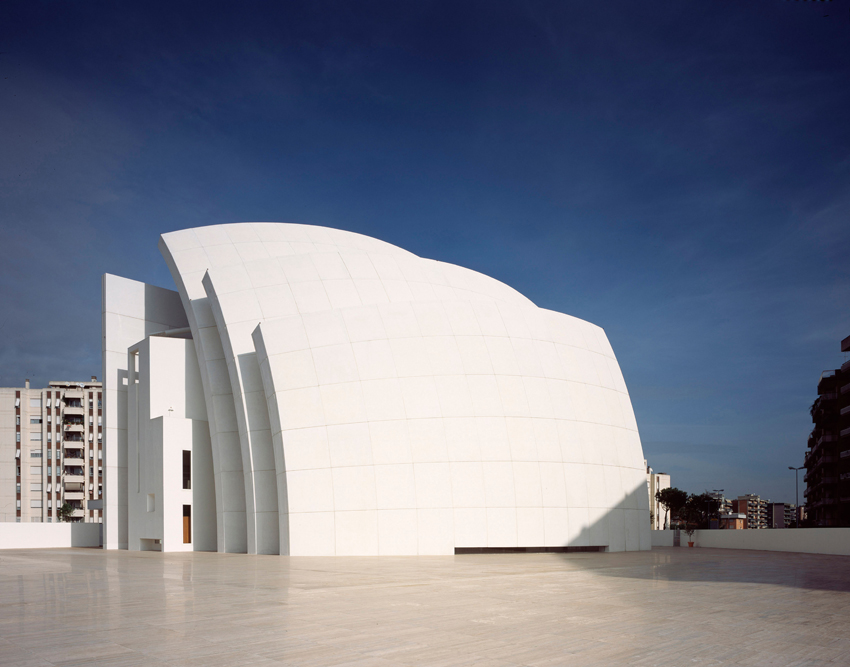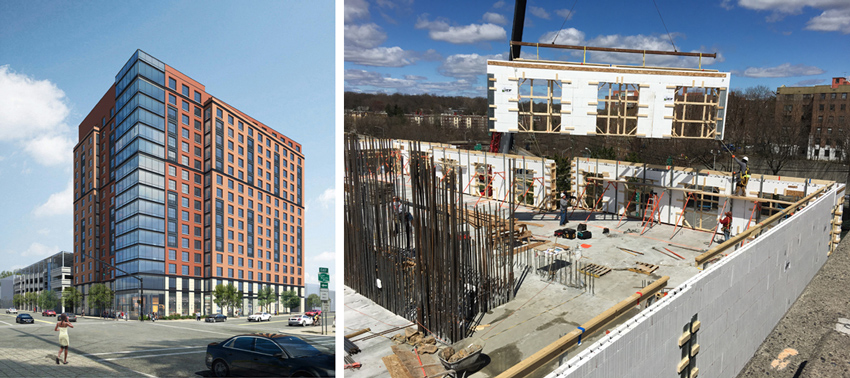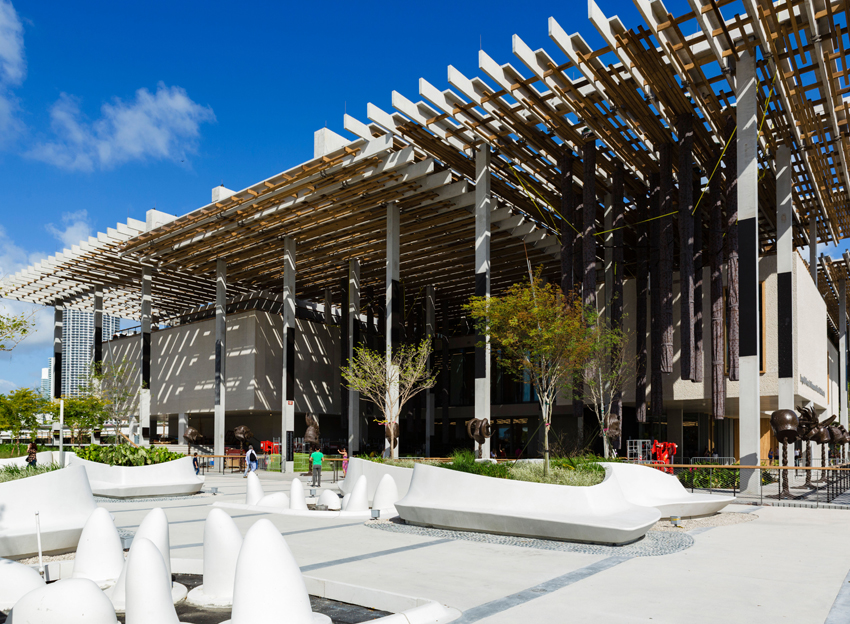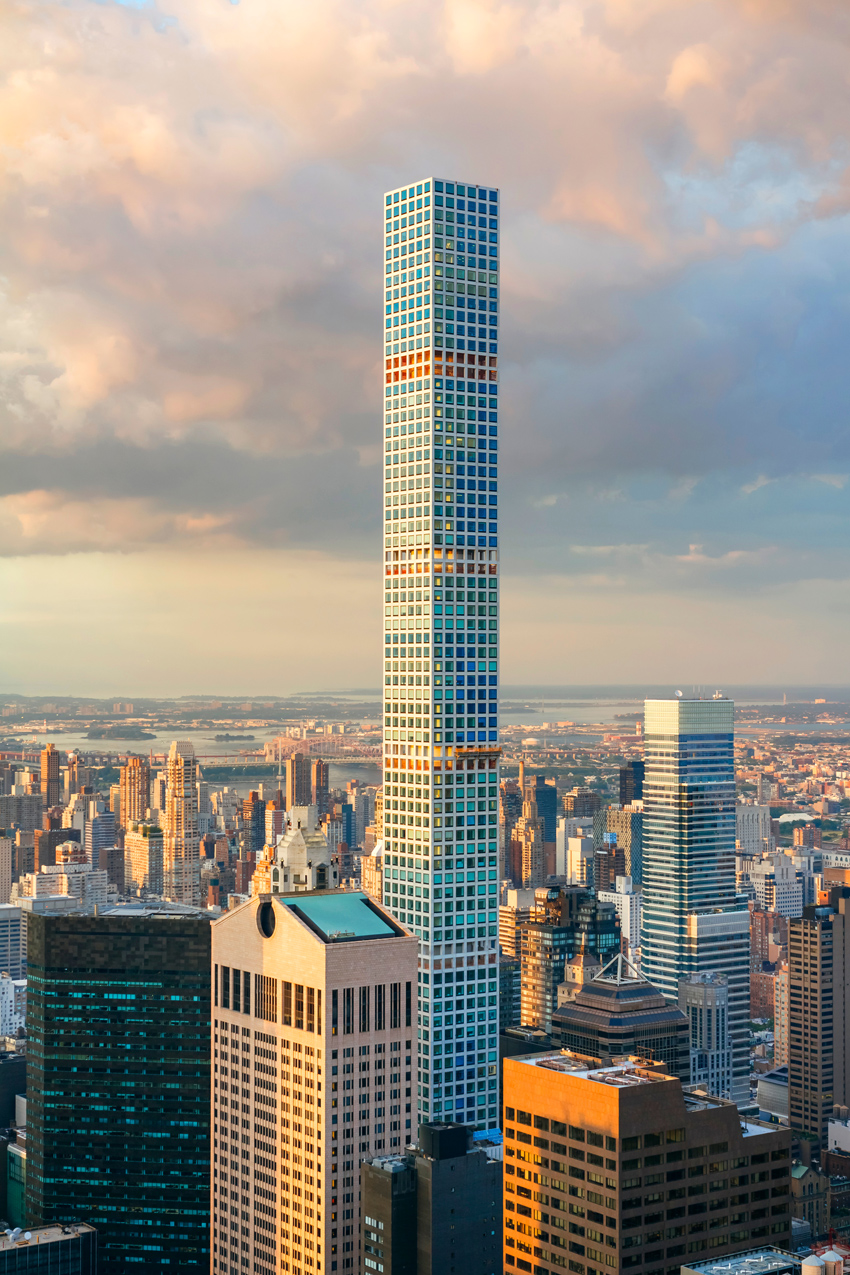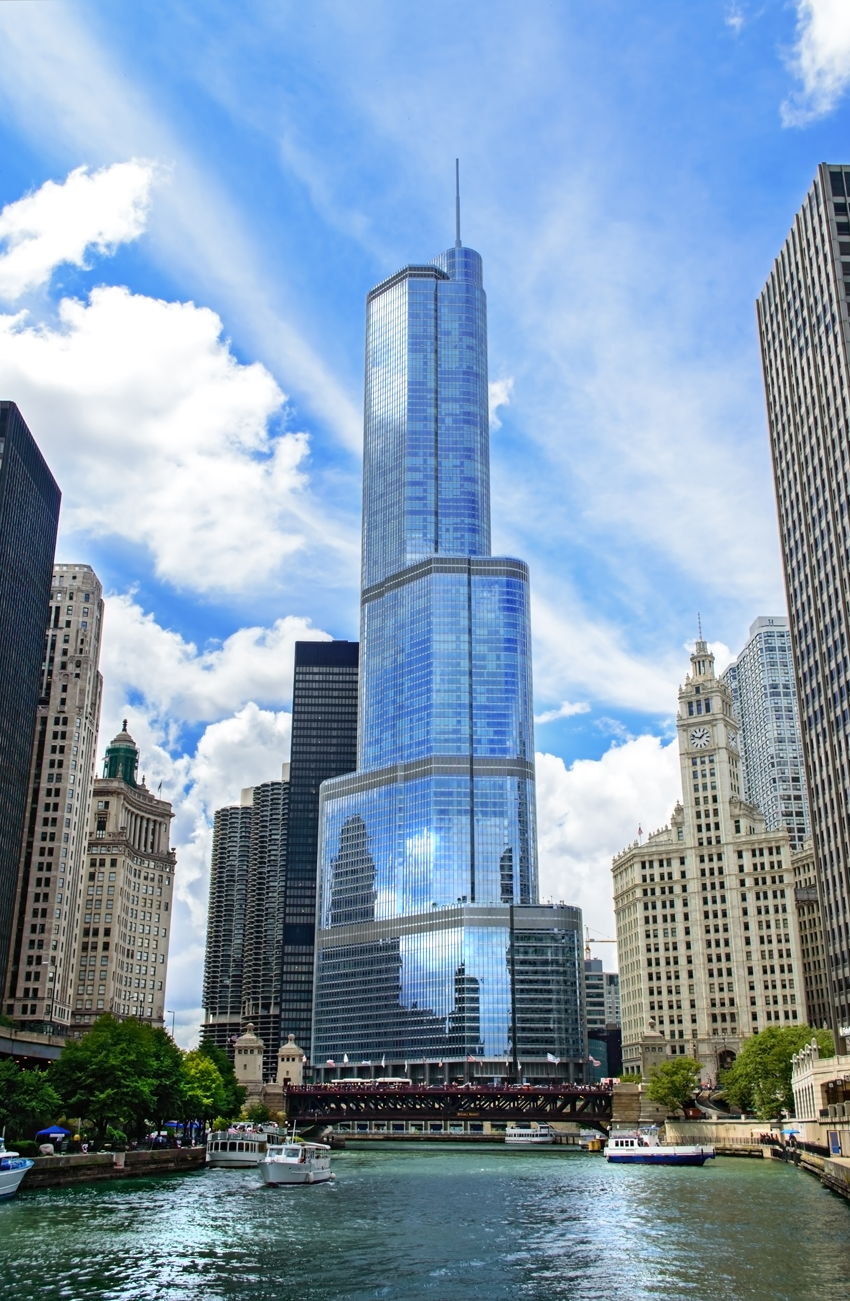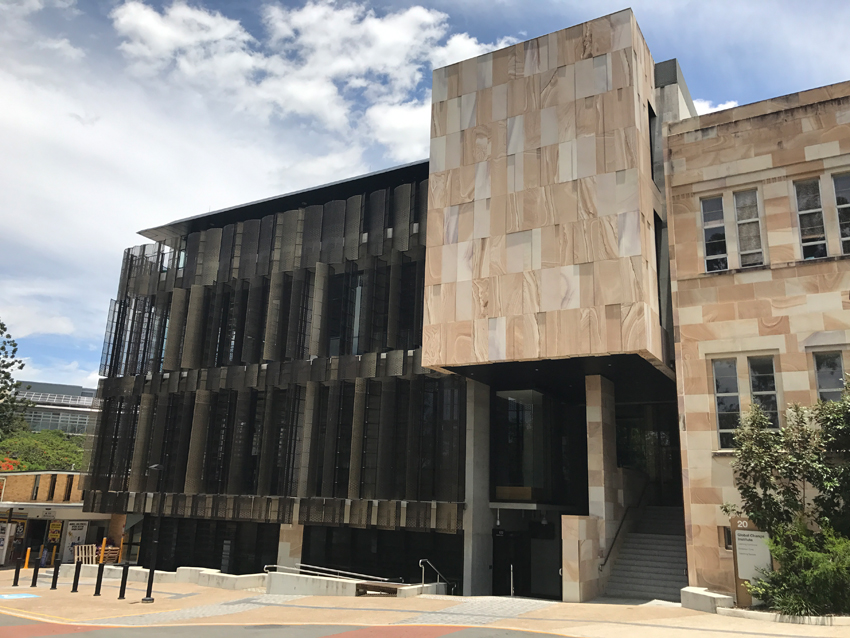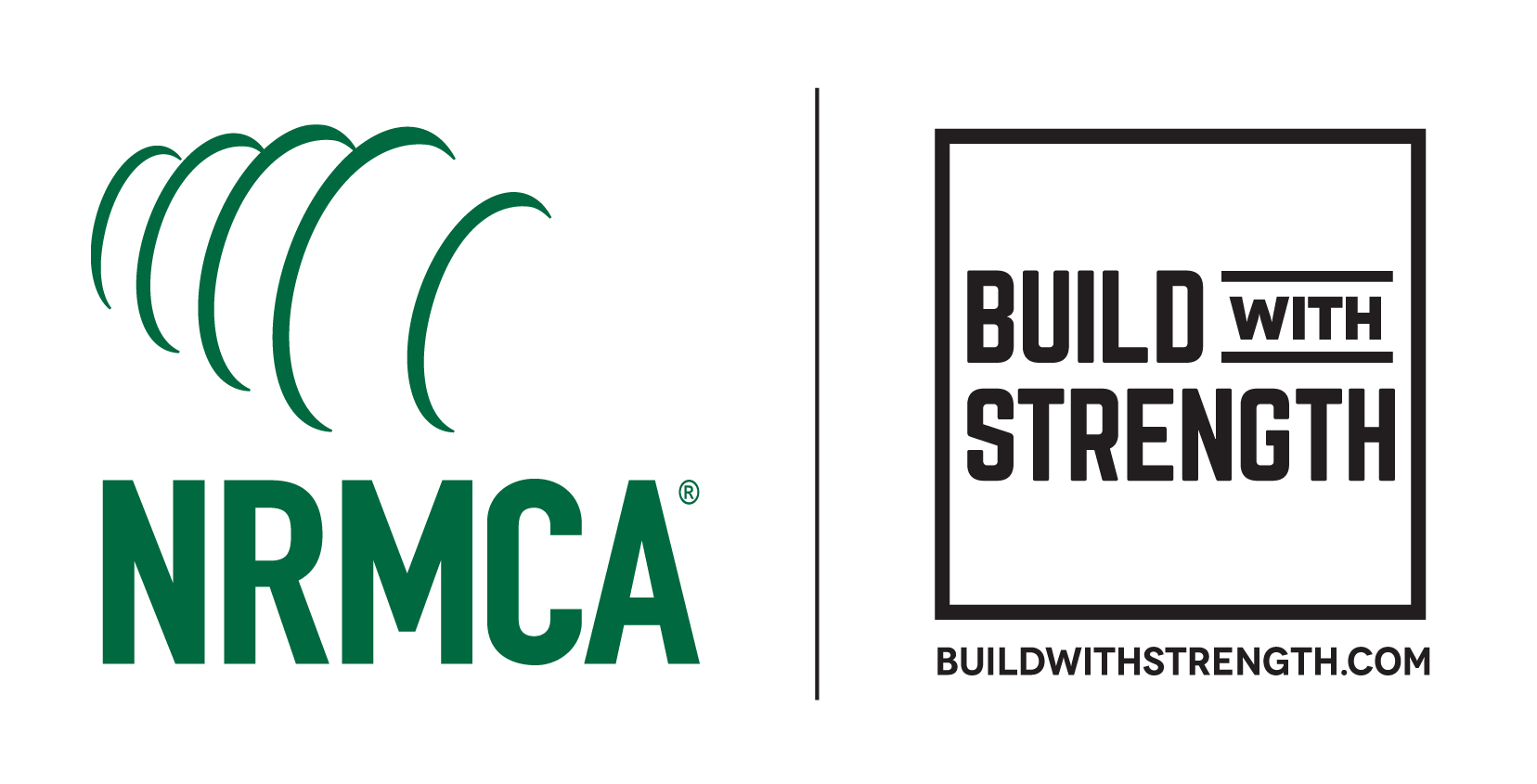This CE Center article is no longer eligible for receiving credits.
What do the Jubilee Church and the Pantheon have in common? They are both places of worship in Rome. But besides this, they are also both built with innovative concrete. The Romans mastered the use of concrete 2,000 years ago to build some of the most iconic structures ever built. Although different than today’s concrete, Roman concrete used the same principals, combining aggregate with a hydraulic binder. The aggregate included pieces of rock, ceramic tile, and brick rubble often recycled from demolished buildings. Volcanic ash, called pozzolana, was the favored binder where it was available. Gypsum and quicklime were used as binders also. And even 3,000 years before, the Egyptians used a form of concrete made with mud and straw to build the pyramids. Today of course, most concrete is made with portland cement, invented in 1824, and combined with high-quality quarried aggregate. Most modern concrete is augmented with innovative products and additives to enhance performance, both during its plastic and hardened states.
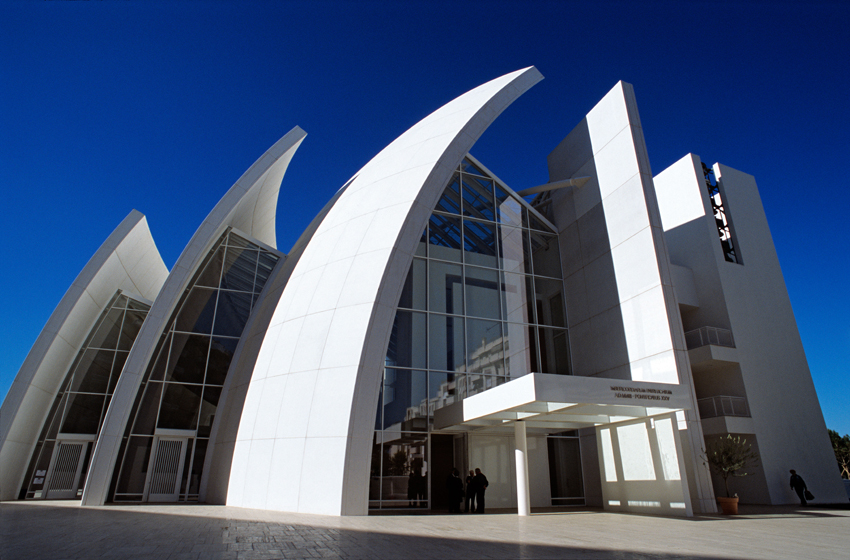
Photo: Elio Lombardo/Alamy Stock Photo
The Jubilee Church in Rome was built with innovative concrete in the early 2000s.
Innovative supplementary cementitious materials (SCMs) such as fly ash, slag cement, and silica fume are used to increase strength, durability, and workability. Chemical admixtures affect set time, freeze-thaw resistance, and flowability. Tiny fibers are added to increase ductility and control cracking. Carbon dioxide is injected into concrete to improve strength and capture greenhouse gasses. Some enhancements actually scrub pollutants from the surface of concrete and the surrounding atmosphere, which is what makes the concrete used to build the Jubilee Church so innovative. The exterior curved surfaces are coated with titanium dioxide (TiO2) cement that eats smog, helping to keep the surface clean.
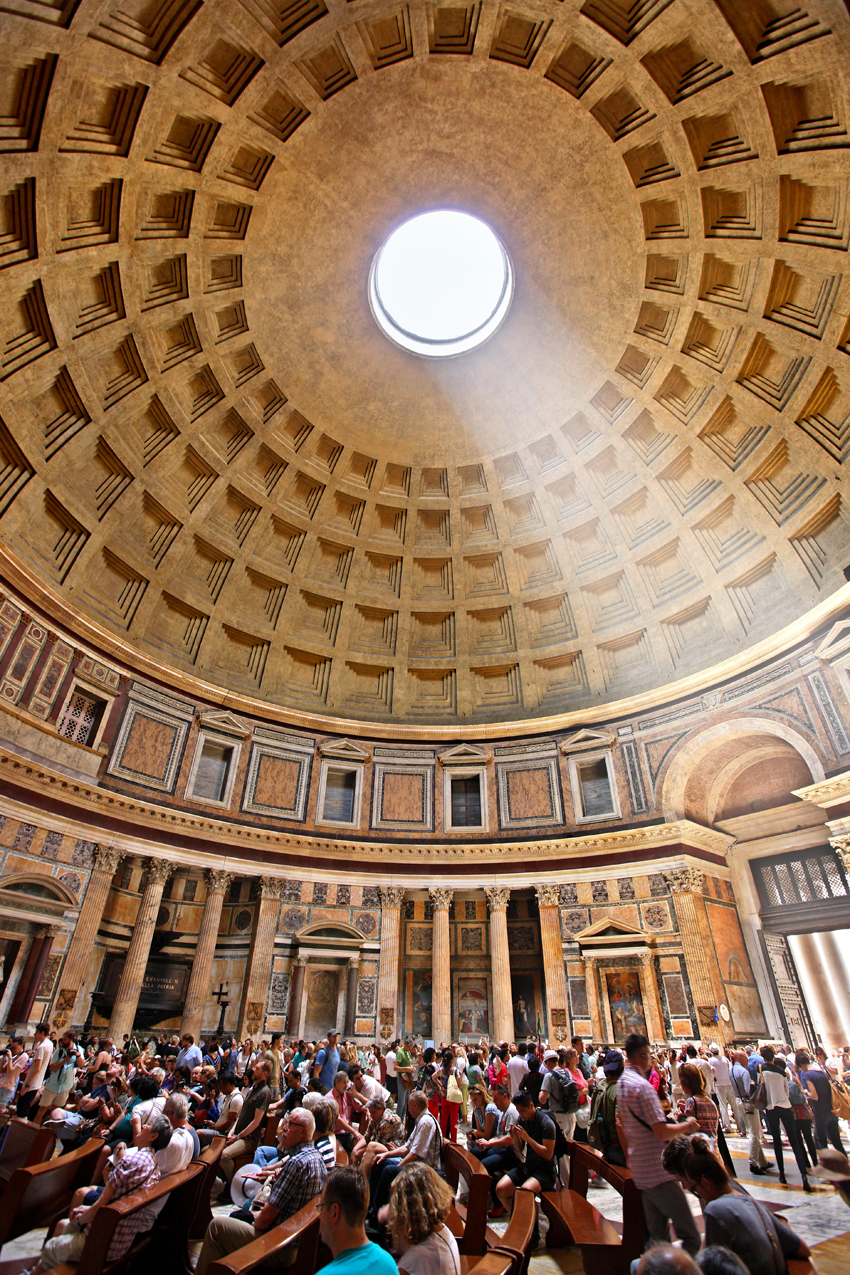
Photo: Hercules Milas/Alamy Stock Photo
The historic Pantheon was built with Roman concrete hundreds of years ago.
Concrete is the most widely used building product in the world. It is mostly made locally with local materials. Concrete is cost-effective, available everywhere, strong, and durable. While conventional concrete can tackle most jobs, it is also the material of choice for the tallest buildings in the world and infrastructure designed to last centuries. Although concrete is not always synonymous with innovation, new products and manufacturing methods are enhancing concrete’s performance to tackle modern challenges. This course explores some of these latest innovations.
Self-Cleaning Concrete
Imagine concrete that can clean itself and even the surrounding air of harmful pollutants. This is what concrete made with TiO2 can do. The function of TiO2 cement is to break down harmful pollutants in the air via a reaction catalyzed by light, or photocatalysis, due to the TiO2 that is added to the cement during its production. This was inspired by the ability of certain microbes to break down harmful chemicals by modifying their oxidation state, also through photocatalysis. However, in photocatylitic cements, the reaction is carried out by the titanium, whereas microbes rely on natural enzymes. The cement breaks down both organic and inorganic pollutants. It is intended for use in urban centers, where air pollution and poor air quality are most pronounced.
An example of how TiO2 cement breaks down pollutants can be seen in its conversion of nitrogen dioxide (NO2), a harmful compound mostly produced by burning fuels in cars and trucks. NO2 is one of the compounds responsible for acid rain, smog, respiratory problems, and staining of buildings and pavements. The reaction with sunlight produces hydroxyl radicals that react with NO2 to produce NO3, which is dissolved by water after reacting with the cement surface.
Research data of a TiO2 cement manufacturer in the United States indicates that “up to 50 percent of these atmospheric pollutants could be reduced in some cities if only 15 percent of the buildings and roads were resurfaced with a TiO2 cement.” A TiO2 cement was first used for the curved panels on the Jubilee Church (also known as Dives in Misericordia Church) in Rome, which used the photocatalytic cement panels for its stylistic shells. Since then, an Italian company has dedicated decades of research to photocatalytic cement products. This cement is promising in its potential to greatly improve both urban life and the environment.1
Bendable Concrete
Bendable concrete presents an efficient alternative primarily in the construction and maintenance of infrastructure, where concrete is subject to harsh weather conditions and extreme loading. The design that gives bendable concrete, or engineered cementitious composite (ECC), its impressive ductility is based off nacre, the substance that coats the inside of abalone shells. Nacre is composed of small aragonite platelets that are held together by natural polymers, allowing it to be both hard and flexible, as platelets are free to slide from side to side under stress. This effect is mimicked in bendable concrete by dispersing tiny fibers throughout. Victor C. Li of the University of Michigan, where ECC was first researched and invented, states that bendable concrete “can deform up to 3 to 5 percent in tension before it fails, which gives it 300 to 500 times more tensile strain capacity than normal concrete.” It is this ability to tolerate tensile strain that makes bendable concrete unique.
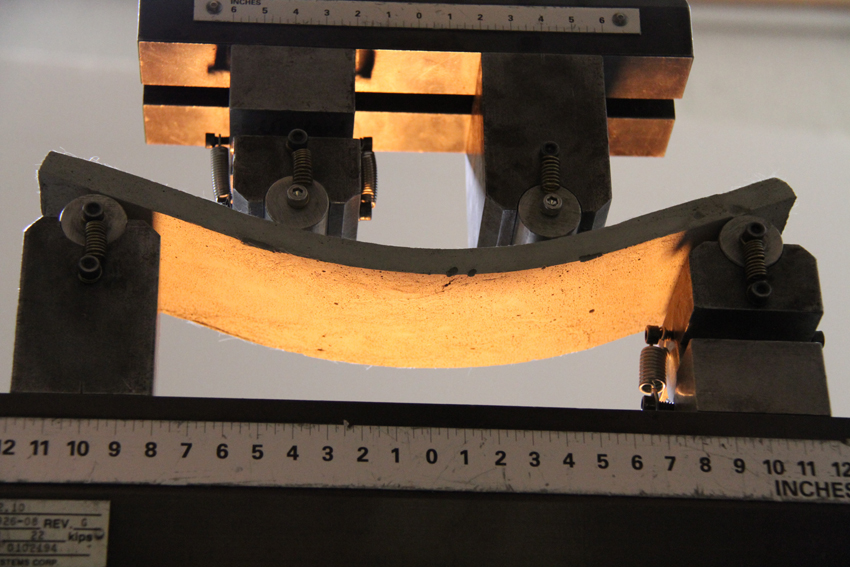
Photo: Victor C. Li
Bendable concrete is 300–500 times more ductile than conventional concrete.
This enormous increase in ductility suggests various potential applications. Firstly, in roads as well as other paved surfaces that must bear repeated loading of heavy vehicles, bendable concrete would crack less often, preventing further weathering primarily from road salts that corrode steel reinforcement. Further, due to ECC’s capacity to absorb greater quantities of energy without being damaged, it can be used to make reinforcing elements, such as the dampers on the Seisho Bypass Viaduct in Japan, which is roughly 28 kilometers long. Dr. Li states that ECC has been employed as earthquake resistance in tall buildings in Tokyo and Osaka, and suggests that it would also be useful in underground and water infrastructure construction.
However, before it can be more widely commercialized for such large-scale projects, bendable concrete must first become more readily available. To be economically viable, it needs to be supplied efficiently and not overused on projects. It is paramount that design professionals be made aware of the product and its potential, as they might otherwise overlook a promising concrete option for structures that require the ability to deal with considerable tensile strain.
Bendable concrete also has self-healing capabilities. Because bendable concrete keeps cracks relatively small, natural reactions within the hardened concrete generate “healing” through carbon mineralization and continuous hydration, which repairs the cracks and restores the durability of the concrete. Bendable concrete is a promising technology that already has proven itself through commercialization by several companies.
In fact, fiber-reinforced concrete is not new. Many companies supply fibers for use in concrete to improve its strength and durability in some way. Fiber-reinforced concrete accomplishes this by incorporating fibers made of steel, glass, or organic polymers (plastics). Sometimes naturally occurring fibers such as sisal and jute have been used as well. These fibers are primarily used to combat plastic shrinkage and drying shrinkage, which can otherwise crack and damage the concrete. This resistance to shrinkage and subsequent cracking is the key to extending the lifespan of concrete, decreasing the frequency of costly repairs. Fibers also keep existing cracks from widening and further damaging the concrete when they do appear. More recently, steel fibers have been used in structural applications to reduce the amount of traditional steel reinforcing bars, saving time and labor.
Ultra-High-Performance Concrete (UHPC)
One building product manufacturer became one of the first companies to commercialize bendable concrete with an ultra-high-performance concrete (UHPC) that incorporates fibers into the concrete mixture to improve strength and ductility, along with a host of other benefits. The manufacturer states that it uses “high-carbon metallic fibers, stainless fibers, poly-vinyl alcohol (PVA) fibers, or glass fibers” to increase the concrete’s ability to withstand tensile loads and deformation.
This UHPC is also less porous than conventional concrete, making it more resistant to chlorides, acids, and sulfates. It is also generally much more impermeable to water, making it ideal for roofing as well. In addition, this UHPC has self-healing properties. This bendable concrete has been thoroughly researched and is commercialized.2
Graphene Concrete
Graphene concrete is made by suspending flakes of graphene in water and then mixing the water with traditional concrete ingredients, such as cement and aggregate. Graphene concrete is concrete reinforced by graphene. Graphene is a single layer of carbon atoms, tightly bound in a hexagonal honeycomb lattice. Layers of graphene stacked on top of each other form graphite, a naturally occurring, crystalline form of carbon most commonly used in pencils and lubricants. The separate layers of graphene in graphite can be separated into sheets only one atom thick. Graphene is the thinnest compound known to man, the lightest material known, and the strongest compound discovered—more than 100 times stronger than steel.
This technology’s strength largely lies with its accessibility given that it is inexpensive and compatible with modern, large-scale manufacturing requirements. According to a research paper published in the Advanced Functional Materials journal titled “Ultrahigh Performance Nanoengineered Graphene – Concrete Composites for Multifunctional Applications,” graphene concrete impressively shows a “146 percent increase in compressive strength as compared to regular concrete, a 79.5 percent increase in flexural strength, and a decrease in water permeability of almost 400 percent.” In addition to its increased strength, graphene concrete is also more environmentally friendly since it requires less cement than is typically required to produce concrete at a specified strength. Alternatively, higher-strength graphene concrete could be used to produce smaller structural elements, thus reducing the amount of material used.3
Carbon Capture
Like most manmade materials, concrete is considered a carbon dioxide (CO2) emitter, mainly due to the cement manufacturing process. But what if one could reverse this process and capture or sequester CO2 in concrete through natural processes or carbon-capture technologies?
Carbonation is a naturally occurring process by which CO2 penetrates the surface of hardened concrete and chemically reacts with cement hydration products to form carbonates. For in-service concrete, carbonation is a slow process with many dependent variables. The rate decreases over time. This is because carbonation decreases permeability and carbonation occurs from the surface inward, creating a tighter matrix at the surface and making it more difficult for CO2 to diffuse further into the concrete. While slow, the carbonation process does result in an uptake of some of the CO2 emitted from cement manufacturing, a chemical process called calcination. Theoretically, given enough time and ideal conditions, all of the CO2 emitted from calcination could be sequestered via carbonation. However, real-world conditions are usually far from ideal.
The rate of CO2 uptake depends on exposure to air, surface orientation, surface-to-volume ratio, binder constituents, surface treatment, porosity, strength, humidity, temperature, and ambient CO2 concentration. Predicting how much CO2 is absorbed by in situ concrete is difficult. What is known is that the rates of CO2 uptake are greatest when the surface-to-volume ratio is high, such as when concrete has been crushed and exposed to air.
One of the most comprehensive studies is highlighted in an article titled “Substantial Global Carbon Uptake by Cement Carbonation,” which was published in the journal Nature Geoscience in November 2016. The research quantifies the natural reversal of the calcination process—carbonation. Using analytical modeling of carbonation chemistry, the researchers were able to estimate the regional and global CO2 uptake between 1930 and 2013. They estimate that the cumulative amount of CO2 sequestered in concrete is 4.5 gigatonnes in that period. This offsets 43 percent of the CO2 emissions from production of cement caused by the calcination process. The researchers conclude that carbonation of cement products represents a substantial carbon sink.
Two areas of research and commercialization offer considerable enhancements to this CO2 uptake process. The most basic approach is enhanced carbonation at end-of-life and second-life conditions of concrete. This might not be considered innovative since it would simply mean changing the way that demolished concrete is collected and treated before reuse. If conditions are right and particle size is small, crushed concrete can potentially absorb significant amounts of CO2 over a short period, such as one year or two, and thus leaving crushed concrete exposed to air before reuse would be beneficial.
Other commercially viable technologies accelerate carbonation. This is accomplished either by injecting CO2 into concrete, curing concrete in CO2, or creating artificial limestone aggregates using CO2.
One company uses CO2 captured from industrial emissions, which is then purified, liquefied, and delivered to partner concrete plants in pressurized tanks. This is then injected into the concrete while the concrete is being mixed, converting the CO2 into a solid-state mineral within the concrete. The minerals formed enhance compressive strength.4
The process reduces CO2 emissions in two ways: through direct sequestration of CO2 injected into the concrete mixture and by reducing cement demand since this concrete requires less cement to produce concrete at a specified strength.
The economic viability of this concrete also makes it a particularly attractive innovation. The cost of equipment and licensing is offset by the reduction in cement. The technology has been installed in more than 100 plants across North America, which have in turn supplied more than 2 million cubic yards of concrete. This product is sufficiently available to be used now and has already been used to great effect in numerous projects.
Use of Carbon-Capture Technology
One company offers another carbon-capture technology. It combines a specially formulated cement with CO2 curing to produce concrete, primarily in the precast concrete products sector. This cement is about the same cost as portland cement but significantly reduces CO2 emissions through reduced production energy. This is primarily because the cement uses all of the same materials that are used to produce portland cement but in a different ratio.5
This specially formulated cement uses less limestone than portland cement, which allows it to be fired at lower temperatures in the same rotary kilns in which ordinary portland cement is currently produced. These lower firing temperatures consume less energy and produce 30 percent less greenhouse gases and other pollutants. Additionally, instead of curing in water like conventional concrete, the concrete cures in contact with a CO2-containing atmosphere. Not only does this allow for more precision during the curing process, but the concrete also sequesters CO2 equal to 5 percent of its weight. Between the combined factors of lower material costs, lower fuel costs, and the CO2 sequestered during curing, the company claims that concrete’s carbon footprint is reduced by 70 percent.
This concrete also offers other practical benefits beyond being environmentally friendly. For example, the company states that its concrete experiences reduced efflorescence, meaning that salt staining will appear less severely and less frequently on the surface when it is exposed to water. Additionally, the concrete’s water absorption is reduced, being less than 2 percent. It has a compressive strength of about 10,000 psi, and it takes less pigment to color. Finally, this concrete is compatible with nonconventional aggregates and recycled glass. This allows for further reduction of material costs and added environmental benefits.
Another company offers a product that “combines unpurified CO2 absorbed directly from power plant flue gas or other industrial CO2 emission sources with metal oxides to make limestone used to coat a substrate, making CO2-sequestered construction aggregate. The limestone coating is 44 percent by mass permanently sequestered CO2 waste.”
The company states that carbon-negative concrete is achievable by using an artificial limestone in concrete. It estimates that by replacing the conventional aggregate in 1 cubic yard of concrete, typically 3,000 pounds worth, 44 percent of its weight would be comprised of sequestered CO2, roughly 1,320 pounds. This would offset more than the amount of CO2 generally produced by the same amount of conventional concrete made with portland cement, which is roughly 600 pounds per cubic yard. The limestone-coated lightweight aggregate was specified for the Interim Boarding Area B at San Francisco International Airport in 2016. Concrete testing showed that this concrete met all necessary specifications.
Carbon-capture and -sequestration technology is a promising solution to reducing the carbon footprint of cement and concrete while improving performance. The possibility of vastly reducing CO2 emissions associated with the production of concrete or even going beyond by sequestering more CO2 than is produced during the cement manufacturing process is enticing. Many carbon-capture and -sequestration technologies are already commercially viable and are currently being used for construction since they can be conveniently produced by existing equipment or by retrofitting existing factories. Overall, carbon capture offers a simple but highly promising solution to reducing the environmental footprint of concrete.
The substrate is usually small rock particles or even recycled concrete.6
Self-Consolidating Concrete
Self-consolidating concrete (SCC) is highly flowable, non-segregating concrete that can flow into place, fill formwork, and encapsulate reinforcement without any mechanical vibration. SCC relies upon a combination of a high proportion of fine aggregate and admixtures called superplasticizers and viscosity modifiers to achieve a stable and highly flowable concrete.
The increased ease of use and efficiency of SCC during construction is the basis for many of its principal benefits. First, it can be placed faster than regular concrete while requiring less finishing and no mechanical vibration. It also improves the uniformity of in-place concrete as well as the uniformity of surfaces, reducing or eliminating the need for surface work.
Additionally, using SCC allows for labor savings as well as increased job-site safety, as it does not require workers to travel the surface of slabs or the tops of walls to mechanically vibrate the concrete. SCC saves time during construction, resulting in cost savings as well as improving the pumpability of the concrete and the turnaround times of concrete trucks.
SCC was first developed in 1986 by Professor Okamura at Ouchi University in Japan to address shortages in skilled labor. At first, SCC was used in highly specialized projects, such as in repair work or difficult-to-reach areas, due to its high cost of production and need for high quality control. The first high-production use of SCC was in precast applications, where concrete is produced and placed in controlled conditions. In ready-mixed concrete applications, SCC was used primarily for heavily reinforced sections and where mechanical vibration was difficult. More recently, SCC is being used in architectural concrete since it results in a surface finish that is superior to that of conventional concrete. SCC still has a relatively high cost, but it is gaining popularity where labor is in short supply or smooth, exposed concrete is desired.
One of the highest-profile uses of SCC is in high-rise buildings, proving its commercial viability and success in practical applications. Some considerations to take into account regarding this concrete stem from the fact that it is dependent upon flowability, which may be reduced by hot weather, long haul distances, or job-site delays. Specifications required for a given job such as flowability and spread can vary, but mixtures can be tested via methods including the slump flow test to determine the extent of the concrete’s plastic properties to ensure that the concrete arriving at a job site matches the standards specific to the project itself. SCC is fully commercialized and used all over the world.
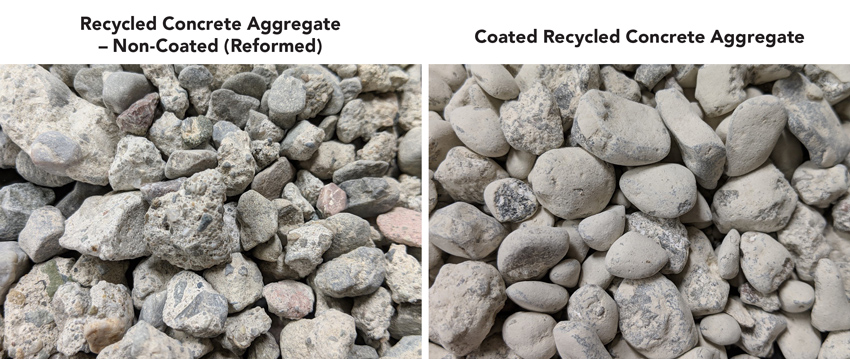
Photos courtesy of Blue Planet
Recycled concrete particles are coated with synthetic limestone, forming a coating that is 44 percent by mass CO2.
From Waste to Worth
Supplementary cementitious materials (SCMs) such as fly ash, slag cement, and silica fume are the keys to high-performance concretes. What makes these materials so innovative is that most are derived from a waste—byproducts of a manufacturing process that would otherwise end up in landfills. But when these waste materials are combined with portland cement in concrete, they react with certain chemical compounds to produce more binder. As a result, these materials are extremely valuable as SCMs.
Silica Fume, Blast Furnace Slag, and Coal Ash
Silica fume is a waste byproduct of processing quartz into silicon or ferro-silicon metals in an electric arc furnace. Silica fume consists of superfine, spherical particles that when combined with cement significantly increases the strength and durability of concrete. Of the three main SCMs, silica fume has the lowest supply and the highest cost, usually at least three times that of portland cement. It is used in applications where extremely high strength is needed, such as columns in high-rise buildings, or where extremely low permeability is desired for durability, such as bridge and parking decks. It is typically combined with other SCMs to optimize performance and cost.
Blast furnace slag is the waste byproduct of iron manufacture. After quenching and grinding, the blast furnace slag takes on much higher value as an SCM for concrete. Blast furnace slag is used as a partial replacement for cement to impart added strength and durability to concrete. Some slag is used to make lightweight aggregate for concrete. About 16 million tons of slag were produced in the United States, but less than half that was used in concrete as an SCM. Slag cement costs about the same or slightly more than cement depending on quality and location.
Coal ash is the waste byproduct of burning coal in electric power plants. Fly ash, a common SCM used in concrete, is one component of coal ash. According to the American Coal Ash Association (ACAA), in 2017, 111.4 million tons of coal ash were produced, of which 38.2 million tons were fly ash. Coal ash and fly ash have many uses, ranging from use in concrete as an SCM to synthetic gypsum for wallboard to mining applications. Of the 38.2 million tons of fly ash produced, only 14.1 million tons are used in concrete.
Fly ash is the most plentiful of all SCMs and is roughly half the cost of portland cement. However, because of increased emissions regulations on coal-fired power plants, not nearly as much high-quality fly ash is produced as in the past. In addition, with a move toward renewables and natural gas, coal-fired power plants are closing, and thus many cost-effective supplies are diminishing.
Because coal power generation started in the early 1900s in the United States, but the use of fly ash in concrete was only started to any significant volume in the late 1900s, it is estimated that about 1.5 billion tons of coal ash has been placed in landfills, of which some is fly ash—and this is where the innovation comes in. Several companies, understanding that the demand for fly ash in concrete is likely to increase, have begun to recover fly ash from landfills and treat it using a process called beneficiation.
Beneficiation simply means taking coal ash from landfills and processing it so it meets the necessary standards for beneficial use. For fly ash, this typically means reducing the amount of unburned carbon in the ash. Carbon tends to have an absorptive quality, which inhibits air-entraining and water-reducing admixtures. There are also other chemicals such as ammonia in some coal ash deposits that must be reduced before use in concrete.
Several companies have developed processes for harvesting ash from landfills and reducing the unburned carbon and ammonia, calcium, sulfur, and other impurities. The simplest process is to burn off the excess carbon. Still other methods use chemical treatment to mitigate the effects of carbon and ammonia, and one company uses low-frequency sound to reduce the size of particles to make them more uniform, which is a desired characteristic of fly ash.
According to an article titled “Digging Through the Past: Harvesting Legacy Ash Deposits to Meet Future Demand” published in a 2019 issue of Ash at Work magazine, author Rafik Minkara concludes, “While the variety of technologies now exist to beneficiate land-filled and ponded ash, the cost and complexity of doing so can be challenging.” He goes on to say, “Beneficiation processes can be as simple as using off-the-shelf equipment or as involved as developing customized solutions with high capex requirements.” In the end, it will depend on demand for fly ash. As low-cost supplies diminish over time, the demand is likely to be filled by harvesting and beneficiating the vast supply of coal ash currently in landfills.
Blended Cements
Most SCMs are added at the concrete plant to supplement portland cement. However, there are several alternatives to portland cement called blended cements. These combine ordinary portland cement (OPC) with other materials at the cement plant. The most common type of blended cement is portland limestone cement (PLC), or technically ASTM C595 Type IL (pronounced “one el”) cement. This blended cement combines up to 15 percent limestone interground with OPC to make a cement with a carbon footprint that is up to 10 percent lower than OPC with performance that is identical to—and in some cases better than—OPC.
There are four types of blended cements in ASTM C595:
- Type IL (X) Portland-Limestone Cement, where X can be between 5 and 15 percent limestone.
- Type IS (X) Portland-Slag Cement, where X can be up to 95 percent slag cement.
- Type IP (X) Portland-Pozzolan Cement, where X can be up to 40 percent pozzolan (fly ash is the most common).
- Type IT (AX)(BY) Ternary Blended Cement, where X and Y are the percentages of slag cement, pozzolan, or limestone, and A and B are the types of ingredients (S, P, or L). The total of X + Y cannot be more than 70 percent, with pozzolan being no more than 40 percent and limestone no more than 15 percent.
Blended cements are accepted in all the concrete standards.
Geopolymer Concrete
Although we are likely years away from widespread commercialization, one of the more interesting areas of research and development is on geopolymer concrete, which uses fly ash and/or slag and chemical activators as the binder in place of portland cement. Geopolymer concrete is made by using a source of silicon and aluminum, usually fly ash or slag, and combining it with an alkaline activating solution that polymerizes these materials into molecular chains to create a hardened binder. The more common activating solutions include sodium hydroxide or potassium hydroxide, which liberates the silicon and aluminum.
Compressive strength of geopolymer concrete is comparable to portland cement concrete or higher, and strength gain is generally faster with strengths of 3,500 psi or higher at 24 hours. Compressive strengths at 28 days have shown to be 8,000 to 10,000 psi. Research shows that geopolymer concrete has lower drying shrinkage, lower heat of hydration, improved chloride permeability, and is more resistant to acids. And its fire resistance is considerably better than portland cement concrete, which is already highly fire resistant, making geopolymer concretes ideal for special high-temperature applications.
To date, most of these products have not developed beyond the research and development stage. A company called Ceratech launched geopolymer concrete in in 2002 but later closed. A product called Pyrament was launched in the 1980s but was not successfully commercialized. Some of the drawbacks include the high cost and energy to produce the chemical activator, the difficulty and safety concerns in handling a highly alkaline solution, and the need to control temperature during the curing process. In addition, building code approvals are always a hurdle. Currently the most promising applications are in severe environments, such as precast concrete bridges, or other specialty applications, such as high-acid or high-temperature environments or for rapid repair.
The key to geopolymer concrete commercialization will be to develop low-cost, easy-to-use activators. One promising development is at Rice University, where engineers have developed a geopolymer concrete that requires only a small fraction of the sodium-based activation chemicals used in other geopolymer concretes. According to the researchers, they used sophisticated statistical methods to optimize the mixing strategies for ingredients. This resulted in an optimal balance of calcium-rich fly ash, nanosilica, and calcium oxide with less than 5 percent of the traditional sodium-based activator.
Conclusion
More than 20 billion tons of concrete are produced around the world each year. As a result, concrete construction contributes about 5 percent of global CO2 emissions primarily due to the cement manufacturing process. The demand for concrete will likely continue to grow as the population grows. In addition, the demands on strength, durability, and workability will continue to increase. A combination of traditional and advanced technologies will help meet these new demands. Technologies such as TiO2 cements, SCC, SCMs, and fibers are being used now to varying degrees with outstanding results. Carbon capture and sequestration are in their infancy but show great promise. Fly ash beneficiation will help meet the demand for affordable, high performance concretes, and geopolymer concretes may one day help make concrete carbon neutral without sacrificing performance.
End Notes
1TX Active. Lehigh Hanson. Web. 29 April 2021
2Ductal. Web. 29 April 2021
3First Graphene. Web. 29 April 2021
4CarbonCure. Web. 29 April 2021
5Solidia Technologies. Web. 29 April 2021
6Blue Planet. Web. 29 April 2021
7Greener Cement. Web. 29 April 2021



